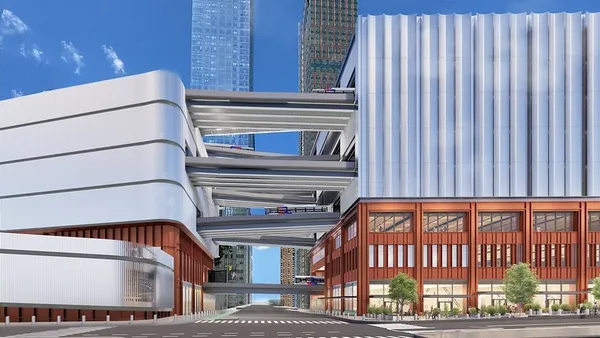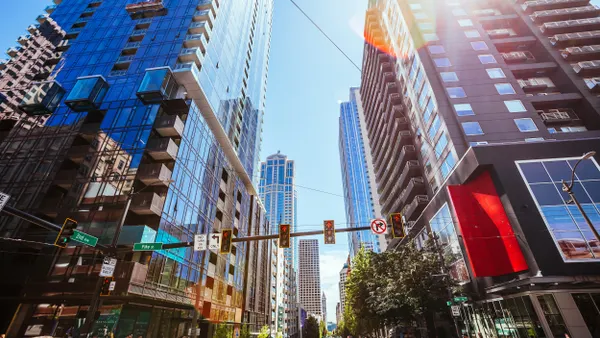Dive Brief:
- Chicago leaders initiated two efforts to drastically expand the number of intersections with accessible pedestrian signals (APS) from the current 11 to up to 100 over the next two years. The devices will have raised arrows on the signal push button, audio cues advising pedestrians when they should walk and vibrations emanating from the button when it's safe to walk.
- One initiative is a federally-funded pilot study bringing together the city's Department of Transportation (CDOT), the Mayor's Office for People with Disabilities (MOPD), and advocates and members of the community who are blind or visually impaired. The stakeholders are developing a final list for up to 50 prioritized intersections where APS installations should occur, including near blind advocacy organizations, healthcare facilities and "intersections where there's a lot of white noise or a lot of overhead noise such as the 'L' (elevated train)," Greg Polman, senior vice president of public policy at nonprofit The Chicago Lighthouse, told Smart Cities Dive.
- The second effort involves CDOT installing APS at up to 50 intersections where road reconstruction, traffic signal installation/modernization and other related infrastructure improvements are scheduled to occur. APS will be available at some of these intersections by the end of this year, while other projects will be completed over the next two years, CDOT spokesman Mike Claffey told Smart Cities Dive.
Dive Insight:
Chicago has about 2,700 signalized intersections, Claffey explained, and the federally-funded pilot project involved all the partners developing ideas for where the initial APS should be deployed. After gathering input on suggested locations, the project prioritizes installing APS in locations where their design and construction can gather additional insights. Public comments on the plan will be accepted until August 8.
The partners identified six different categories of intersections: the Central Business District; residential/commercial locations; institutional locations; six-legged intersections; university campuses; and locations suggested by stakeholders. The partners studied the six categories to figure out how to optimize APS' design and installation in a variety of environments.
"It's a step in the right direction," Polman said. "The city environment has changed so much over the years. Cars are quieter and there's a lot of ambient noise. So these [signals] will be a very helpful tool."
He applauds the city's commitment to bringing a variety of stakeholders to the table during the planning process.
"They involved a lot of different people within the blind community who have a lot of different views. They may not necessarily always agree, but people came together on this issue of getting more accessible pedestrian signals," Polman said.
He points out that CDOT also has worked with The Chicago Lighthouse and other stakeholders on designing and installing curb cuts to improve accessibility. The city has been playing catch-up with upgrading antiquated portions of the L system — the first trains began operating in 1892 — to make them accessible to people of all abilities.
When the Americans with Disabilities act passed in 1990, only about 6% of the rail stations complied with the standards, but that now stands at 70%. The Chicago Transit Authority (CTA) has the goal of making the system 100% accessible. Last year, Chicago became the first city chosen by Smart Cities for All to pilot the Smart City Digital Inclusion Maturity Tool, which assesses the accessibility and inclusion of persons with disabilities in city digital and smart services.
Like Chicago, other cities are working to become more inclusive of people with disabilities and make urban environments easier and safer to navigate. For example, Tampa, FL signed on to test reactive street paint that would send signals to smart canes used by visually impaired individuals, setting safety boundaries that can't be detected by sighted people.
A lack of safe and inclusive streetscapes can hinder people with mobility restrictions, sometimes leading to isolation. Advocates emphasize that making cities more inclusive benefits all residents, not just certain groups like people with disabilities or seniors.










